MuxLab Stereo Audio-Video Balun Installation guide
- Category
- Coaxial cables
- Type
- Installation guide
MuxLab Stereo Audio-Video Balun is a device that enables users to transmit composite baseband video and balanced stereo audio signals over unshielded twisted pair (UTP) cables in a structured cabling system. It is typically used in pairs to transmit standard NTSC, SECAM, and PAL composite video signals, and it can also be used to transmit unbalanced audio signals.
The Balun converts unbalanced audio and composite baseband video signals from coax to UTP, making it convenient for transmitting these signals over long distances using structured cabling. It supports a broad frequency range of DC to 8 MHz for video and 20 Hz to 20 kHz for audio, ensuring high-fidelity transmission.
MuxLab Stereo Audio-Video Balun is a device that enables users to transmit composite baseband video and balanced stereo audio signals over unshielded twisted pair (UTP) cables in a structured cabling system. It is typically used in pairs to transmit standard NTSC, SECAM, and PAL composite video signals, and it can also be used to transmit unbalanced audio signals.
The Balun converts unbalanced audio and composite baseband video signals from coax to UTP, making it convenient for transmitting these signals over long distances using structured cabling. It supports a broad frequency range of DC to 8 MHz for video and 20 Hz to 20 kHz for audio, ensuring high-fidelity transmission.


-
 1
1
-
 2
2
MuxLab Stereo Audio-Video Balun Installation guide
- Category
- Coaxial cables
- Type
- Installation guide
MuxLab Stereo Audio-Video Balun is a device that enables users to transmit composite baseband video and balanced stereo audio signals over unshielded twisted pair (UTP) cables in a structured cabling system. It is typically used in pairs to transmit standard NTSC, SECAM, and PAL composite video signals, and it can also be used to transmit unbalanced audio signals.
The Balun converts unbalanced audio and composite baseband video signals from coax to UTP, making it convenient for transmitting these signals over long distances using structured cabling. It supports a broad frequency range of DC to 8 MHz for video and 20 Hz to 20 kHz for audio, ensuring high-fidelity transmission.
Ask a question and I''ll find the answer in the document
Finding information in a document is now easier with AI
Related papers
-
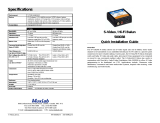 MuxLab S-Video / Hi-Fi Balun Installation guide
MuxLab S-Video / Hi-Fi Balun Installation guide
-
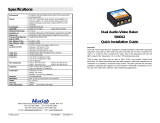 MuxLab Dual Audio-Video Balun Installation guide
MuxLab Dual Audio-Video Balun Installation guide
-
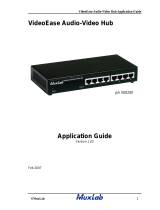 MuxLab DA1226AT Installation guide
MuxLab DA1226AT Installation guide
-
MuxLab Analog Audio Balun Installation guide
-
MuxLab Component Video/Analog Audio ProAV Balun Installation guide
-
MuxLab Quad Audio Balun Installation guide
-
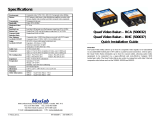 MuxLab Quad Video Balun Installation guide
MuxLab Quad Video Balun Installation guide
-
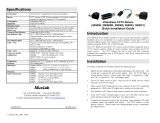 MuxLab CCTV Screw Terminal Balun Installation guide
MuxLab CCTV Screw Terminal Balun Installation guide
-
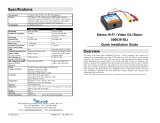 MuxLab Stereo Hi-Fi/Video GLI Balun Installation guide
MuxLab Stereo Hi-Fi/Video GLI Balun Installation guide
-
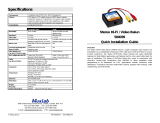 MuxLab Stereo Hi-Fi Video Balun Installation guide
MuxLab Stereo Hi-Fi Video Balun Installation guide
Other documents
-
König SEC-BLN11 Datasheet
-
 StarTech.com CRJ45SOL50PK Datasheet
StarTech.com CRJ45SOL50PK Datasheet
-
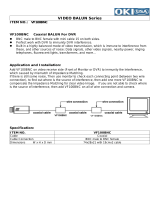 Okina USA VF100BNC Owner's manual
Okina USA VF100BNC Owner's manual
-
Channel Vision B-201 User manual
-
Black Box IC462A Datasheet
-
 StarTech.com RCAVIDHQ6 Datasheet
StarTech.com RCAVIDHQ6 Datasheet
-
Lindy 600m CAT5e/6 Composite Video Extender User manual
-
Black Box G.703 User manual
-
Black Box CAT3 User manual
-
ADC Baluns Series User manual











